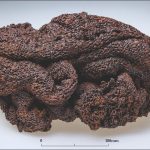Lately, the internet has become a nuclear wasteland. The shelf life to enjoy new media, be it video games or anime, inevitably becomes the focal point of a meritless culture war, where chuds accuse art of being “woke,” pearl clutch at diverse characters who don’t look like them being showcased in media, and launch harassment campaigns against creators and those attempting to foster constructive dialogue.
This mind-numbing trend has manifested alongside newly released games like Dragon Age: The Veilguard being the discourse de jour for gaming tourists turned Gamergate-wannabe pariahs galvanizing their base to push back against “forced diversity” in gaming for tired portrayals of women with big asses and boobs and no agency (this is the hill they’re dying on). Ultimately, trying to charitably counter racism with reason is futile, as its basis is inherently flawed. Unfortunately, this same flavor of senseless rhetoric has set its sights on Dan Da Dan in what could be the dumbest bit of anime discourse of the year.
I ended up doing them :3 pic.twitter.com/Oe8LlrJKGu
— 𝗟𝘆𝗻𝗻 🐡 Comms Closed! (@Lynn6Thorex) December 1, 2024
Last month, an X/Twitter artist named Lynn6Thorex uploaded Dan Da Dan fan art redrawing protagonists Okarun and Momo Ayase as Black. Since its upload, the post garnered over 88,000 likes and 11,000 reposts, with many of its admirers commissioning the artist for anime profile pics and artwork. The artwork even found its way to Okarun English voice actor AJ Beckles and his fiance (and fellow Dan Da Dan actor) Anairis Quiñones, who changed their matching profile pictures to Lynn’s renditions of Okarun and Momo.
Unfortunately, Lynn’s innocuous bit of fan art has become the epicenter of said culture war where folks on Twitter are accusing the artist, Western Black anime fans, and Beckles of “disrespecting the original work by turning characters Black and excluding Japanese people.” Folks with unwashed asses and a penchant for militarizing on Twitter at the slightest whiff of a non-white person in the space sharing joy from art signal-boosted tweets from Japanese accounts taking issue with the fan art as proof that it exists as an affront to Japan. In reality, it’s just another piece of art a Black artist had the audacity to create. Some folks in said unwashed camp are rallying for Beckles to be removed as Okarun’s voice actor for *checks notes* changing his profile pic to the fan art. Fortunately, people have shown support for Lynn, including Beckles, who, like many Black voice actors, often must rise above the hate and remind fans not to let it spoil their day.
“Honestly this is just another day in the life as a Black man for me so I’m okay,” Beckles tweeted. “But for your own mental health and to avoid triggers please avoid my comments on previous posts for the time being.”
Anime has gone from being a guilty pleasure for fans to a mainstream touchstone, with athletes and celebrities flourishing in their affinity for the medium. While many think pieces will be written until the end, positing what triggered anime’s propelling into the mainstream, it’s hard not to ignore Black culture’s significant role in pushing its online presence. This rise to prominence in the Black anime community through fan art, skits, and online discussions has reverberated into the voice-acting industry with the steady rise of young Black voice actors. Still, racism finds a way to rear its ugly head, accusing Black actors in anime of being a product of woke culture and “SJW hires” instead of competent actors whose talents landed them their roles.
Anime has a knack for lifting Black iconography and features to give its cast of predominantly non-Black characters an added texture of cool factor. Whether it’s through assigning them dreadlocks, slang, or other attributes, it reflects a broader systemic issue in anime. The medium often fails to provide fair representation to those outside of Japan, frequently resorting to worn-out stereotypes or relegating Black characters to minor roles. Nevertheless, the experience of Black anime fans often involves cherishing the few canon Black characters that exist, identifying with characters like Piccolo from Dragon Ball Z (who reflects aspects of the Black experience), or creating fan art and cosplay that reimagine characters as Black to compensate for the general lack of representation in anime.
Doechii x Aira #Dandadan #doechii pic.twitter.com/5UkNlMwKDQ
— AFDS_BM (@AfdsBm) December 9, 2024
This phenomenon isn’t unique to anime in the slightest. You’d be hard-pressed to find anyone from the ’90s to the early aughts who didn’t come across Looney Tunes and The Simpsons artwork on airbrushed t-shirts or graffiti with Bugs Bunny and Bart Simpson in a tipped cap and basketball jersey. If anything, the anime community’s fan art reimagining characters from anime like Dan Da Dan, Jujutsu Kaisen, Demon Slayer, Delicious in Dungeon, and My Hero Academia as Black and brown ethnicities is a natural extension of that phenomenon.
Anime is for everyone, and getting mad over fans having harmless fun making art of characters as Black doesn’t take anything from anyone and shouldn’t lead to some paradigm shift disrupting your life. It’s not that deep.
Dan Da Dan is streaming on Crunchyroll, Netflix, and Hulu.
Want more io9 news? Check out when to expect the latest Marvel, Star Wars, and Star Trek releases, what’s next for the DC Universe on film and TV, and everything you need to know about the future of Doctor Who.





GIPHY App Key not set. Please check settings